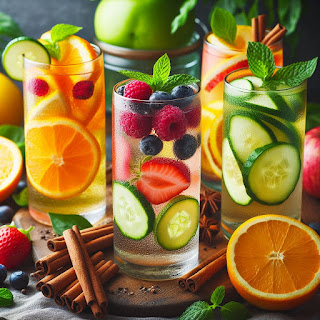World No Tobacco Day: Harnessing the Power of Diet in Quitting Smoking
On World No Tobacco Day, we unite in the global effort to raise awareness about the harmful effects of tobacco use and advocate for policies to reduce tobacco consumption. While quitting smoking is undoubtedly a challenging journey, there are various strategies that can support individuals in their cessation efforts. In this blog, we'll explore the role of diet in quitting smoking and how making healthy dietary choices can aid in the transition to a smoke-free life.
Understanding the Link Between Diet and Smoking Cessation:
The decision to quit smoking often prompts individuals to reassess their overall lifestyle habits, including diet and nutrition. Research suggests that certain dietary factors can influence smoking behaviors, cravings, and withdrawal symptoms, making dietary interventions a valuable component of smoking cessation programs.
Nutrient-Rich Foods to Support Smoking Cessation:
Fruits and Vegetables: Incorporate plenty of fruits and vegetables into your diet, as they are rich in vitamins, minerals, and antioxidants that can help repair cellular damage caused by smoking and reduce oxidative stress in the body.
Whole Grains: Choose whole grains like brown rice, quinoa, oats, and whole wheat bread to provide sustained energy and support mood stability during the quitting process.
Lean Proteins: Include lean proteins such as poultry, fish, tofu, and legumes to support muscle health, keep you feeling satisfied, and prevent cravings for unhealthy snacks.
Healthy Fats: Incorporate sources of healthy fats like avocados, nuts, seeds, and olive oil into your diet to support brain health, reduce inflammation, and promote feelings of satiety.
Strategies for Using Diet to Quit Smoking:
Stay Hydrated: Drink plenty of water throughout the day to help flush toxins from your system, reduce cravings, and keep your mouth and throat moist.
Snack Smart: Choose nutritious snacks like fresh fruit, raw vegetables, nuts, and yogurt to satisfy cravings and prevent mindless snacking on high-calorie, high-sugar foods.
Mindful Eating: Practice mindful eating by paying attention to hunger and fullness cues, savoring each bite, and avoiding distractions like screens or stress while eating.
Seek Support: Enlist the support of friends, family, or a healthcare professional who can provide encouragement, accountability, and guidance on making healthy dietary choices during the quitting process.
The Role of Diet in Long-Term Health and Wellness:
Quitting smoking is not only a significant step towards improving your health and reducing your risk of tobacco-related diseases but also an opportunity to embrace a healthier lifestyle overall. By adopting a balanced diet rich in nutrient-dense foods, you can support your body's natural detoxification processes, promote healing, and lay the foundation for long-term health and wellness.
As we commemorate World No Tobacco Day, let us recognize the profound impact of diet on smoking cessation and overall health. By nourishing our bodies with wholesome, nutrient-rich foods and making mindful dietary choices, we can support our journey towards a smoke-free life and embrace a brighter, healthier future.




















.jpg)



































